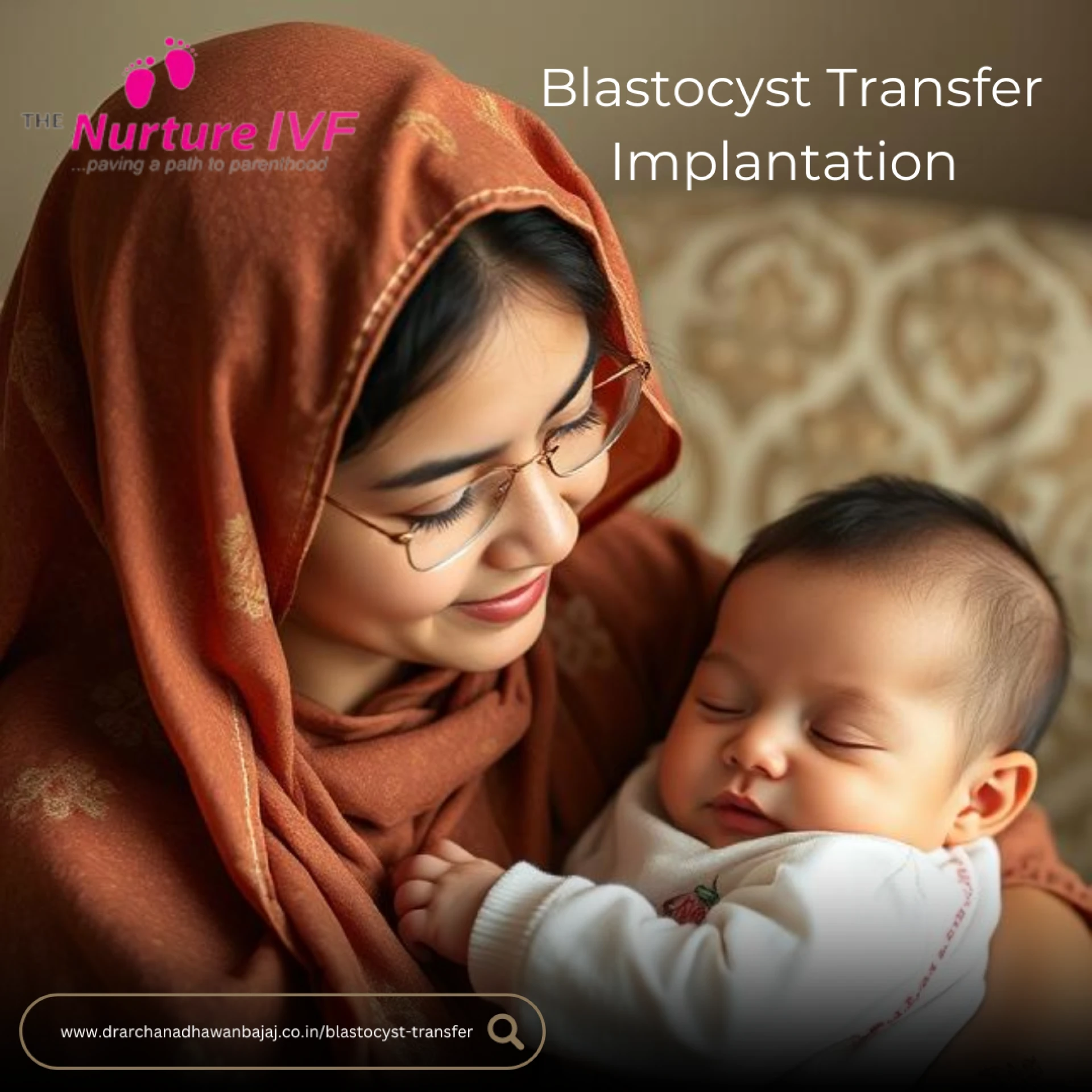Achieving a successful pregnancy through assisted reproductive technology (ART) requires precise medical expertise and innovative techniques. One such advanced approach that has significantly improved success rates in in-vitro fertilization (IVF) treatments is Blastocyst Transfer Implantation. This method allows for the transfer of a more developed embryo, thereby increasing the chances of implantation and a healthy pregnancy. Under the expert guidance of renowned fertility specialist Dr. Archana Dhawan Bajaj, couples facing infertility challenges can now experience enhanced success rates and a higher likelihood of conception.

Understanding Blastocyst Transfer Implantation
Blastocyst transfer is an advanced embryo transfer technique in which embryos are cultured for five to six days before being implanted into the uterus. Unlike the traditional method, where embryos are transferred on day three, allowing the embryo to reach the blastocyst stage improves implantation potential. This extended culture period allows embryologists to select the healthiest and most viable embryos, thereby increasing the likelihood of pregnancy.
Why is Blastocyst Transfer Implantation More Effective?
- Higher Implantation Rates: Blastocyst-stage embryos have a greater ability to implant in the uterine lining, leading to higher pregnancy success rates.
- Better Embryo Selection: The extended culture process enables the identification of embryos with strong developmental potential.
- Reduced Risk of Multiple Pregnancies: Since blastocyst transfer enables the selection of a single high-quality embryo, the risk of multiple gestations is significantly minimized.
- Synchrony with the Uterus: By the time a blastocyst is implanted, the uterine lining is optimally prepared for implantation, leading to improved pregnancy outcomes.
The Role of Blastocyst Transfer in IVF Success
In traditional IVF, embryos are transferred at the cleavage stage (day three), which may not always lead to implantation. The natural development of an embryo usually reaches the uterus at the blastocyst stage, making Blastocyst Transfer Implantation a more synchronized approach. This procedure mimics the natural reproductive process, ensuring the highest chances of successful pregnancy.
With advancements in reproductive medicine, experts like Dr. Archana Dhawan Bajaj have pioneered the use of blastocyst transfer to improve fertility treatments. By employing this technique, fertility specialists can offer better prognostic evaluation and success rates, especially for patients with previous implantation failures or those undergoing preimplantation genetic testing (PGT).
Who Can Benefit from Blastocyst Transfer?
- Couples with Repeated IVF Failures: Patients who have experienced multiple failed IVF cycles can benefit from a more selective and targeted embryo transfer.
- Patients Seeking Single Embryo Transfer (SET): Those who wish to reduce the risks associated with multiple pregnancies may opt for blastocyst transfer.
- Women Over 35 Years of Age: Since age affects embryo quality, blastocyst transfer helps in selecting the best embryo for successful implantation.
- Individuals with Unexplained Infertility: For couples struggling with unexplained infertility, a blastocyst transfer can offer higher chances of pregnancy.
The Process of Blastocyst Transfer Implantation
- Ovarian Stimulation and Egg Retrieval: The process begins with ovarian stimulation to produce multiple eggs, which are then retrieved for fertilization.
- Embryo Culture to the Blastocyst Stage: Fertilized eggs are monitored and cultured in a laboratory for up to six days.
- Selection of the Best Blastocyst: The most viable blastocyst is selected based on its morphological grading and developmental progress.
- Blastocyst Transfer into the Uterus: The selected blastocyst is gently transferred into the woman’s uterus using a catheter.
- Waiting Period and Pregnancy Test: After the transfer, patients wait for about two weeks before taking a pregnancy test to determine the success of implantation.
Success Rates and Advantages
The success rate of Blastocyst Transfer Implantation is significantly higher than traditional embryo transfer. Studies indicate that blastocyst transfer leads to better implantation rates, improved embryo survival, and a lower risk of miscarriage. Under the expert guidance of Dr. Archana Dhawan Bajaj, patients receive a tailored treatment plan that optimizes success rates while ensuring a comfortable and safe procedure.
Key Advantages of Blastocyst Transfer:
- Increased chances of a successful pregnancy per transfer
- Reduction in ectopic pregnancies
- Less need for repeated IVF cycles
- Greater predictability in embryo selection
Final Thoughts
For couples struggling with infertility, Blastocyst Transfer Implantation is a game-changing technique that offers new hope and increased chances of conception. With advanced fertility treatments and personalized care from experts like Dr. Archana Dhawan Bajaj, couples can embark on their journey to parenthood with confidence and optimism. If you are considering IVF and seeking higher success rates, consulting a skilled fertility specialist can help you determine whether blastocyst transfer is the right option for you.


